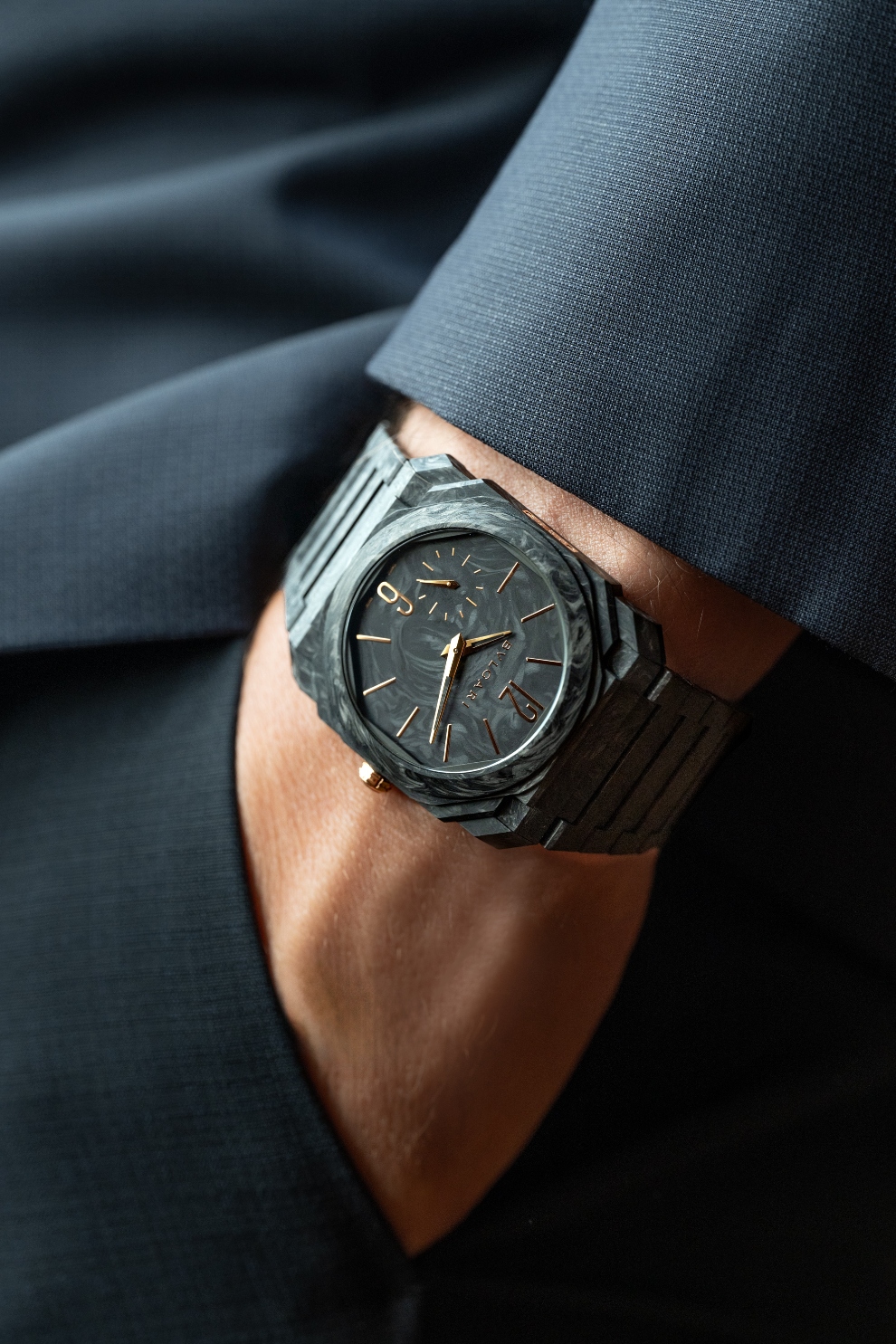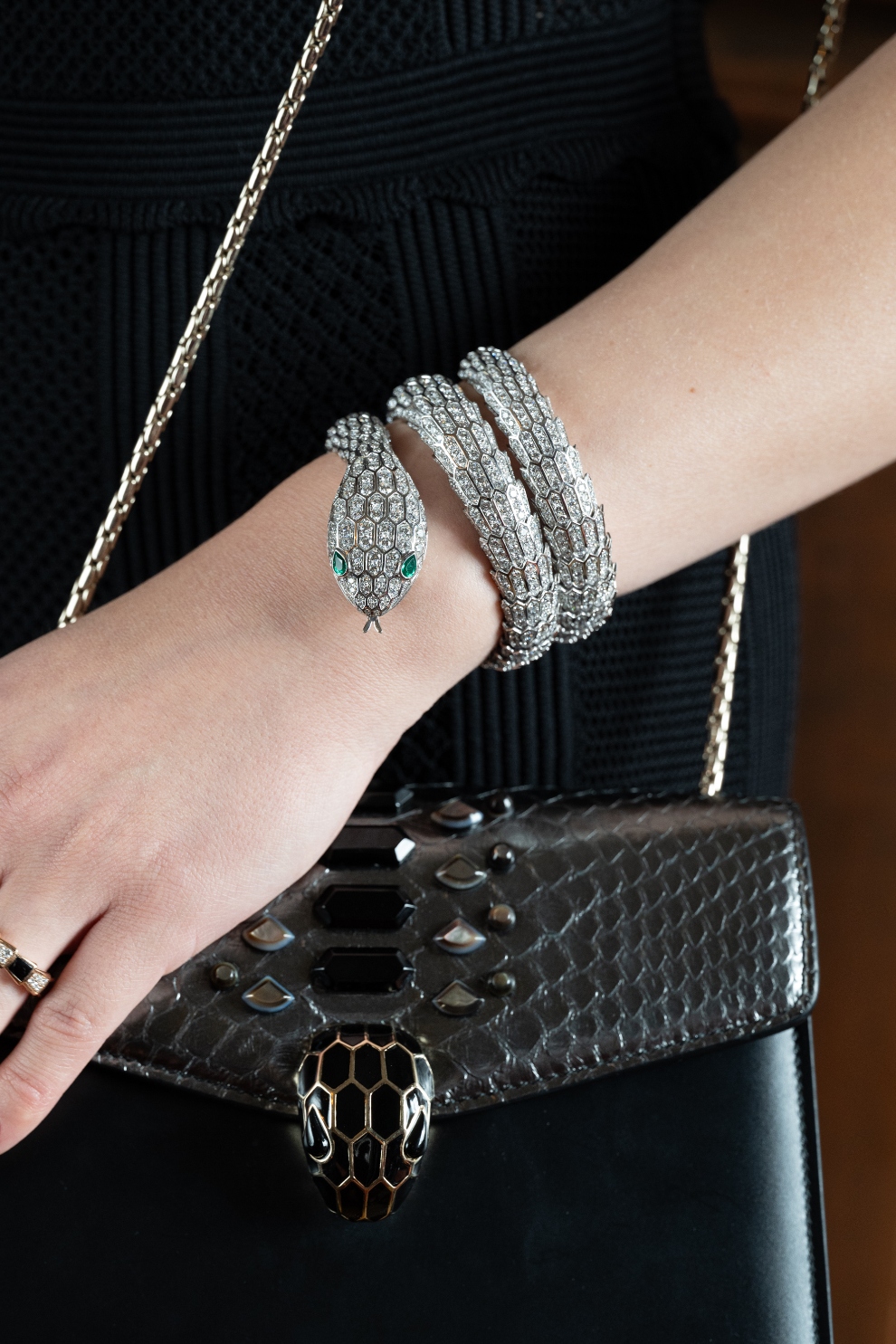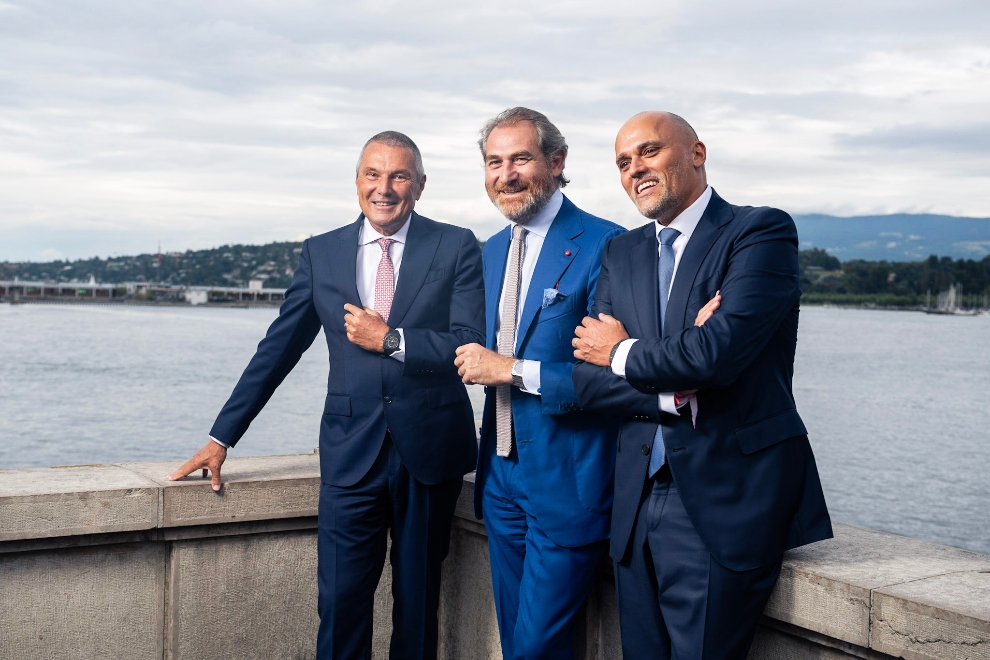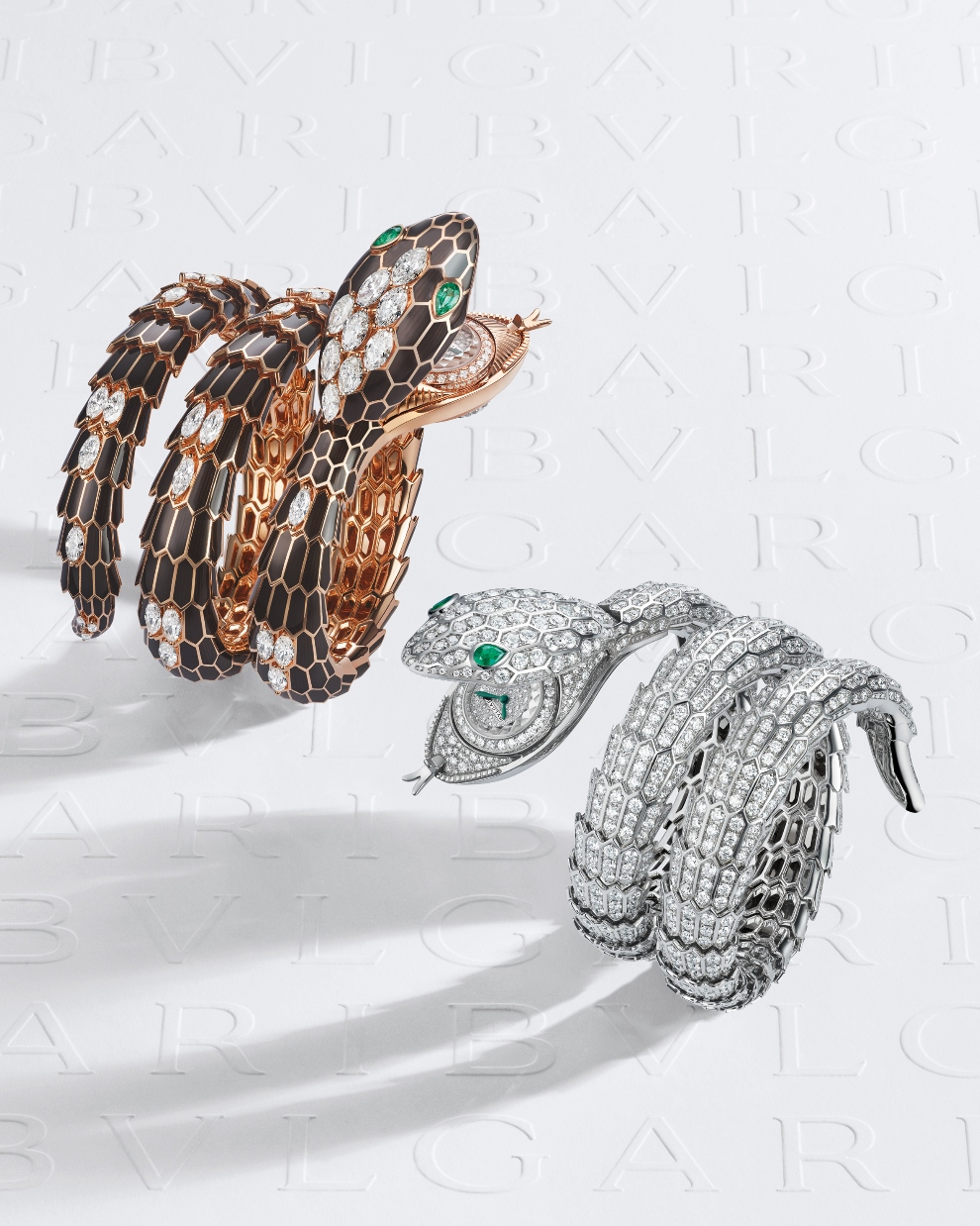Bulgari CEO Jean-Christophe Babin Talks Brand Elevation
On the sidelines of Geneva Watch Days, Bulgari CEO Jean-Christophe Babin talks about the challenges of having one brand identity across all categories and tells us what he thinks of watch fairs

Bulgari CEO Jean-Christophe Babin
This is a story that was a long time coming… In fact, it comes all the way from TAG Heuer maybe 10 years ago. While various titles in the group have indeed scored interviews with Bulgari CEO Jean-Christophe Babin since 2013, WOW has not got one since at least 2016 (at least not in the era of this editor, who never had one in any of his previous roles and companies – Ed). Given that WOW has recently managed to interview the CEO of every LVMH watchmaking brand (from Hublot to TAG Heuer), it was particularly galling that Babin eluded us. Well, no more because we finally did it and thus achieved the LVMH Grand Slam of CEO interviews.
Seriously though, Babin represents one of the last of the old-school watch and jewellery bosses, yet is not at all married to tradition. Indeed, he often zigs when you think he will zag, as they say. We, and no doubt you too, recall very well when Babin announced Bulgari’s ultra-thin watch challenge in BaselWorld, probably in 2013 or 2014. It was a deeply astonishing move from a man who had only just moved over from TAG Heuer, where he had been CEO since 2000. The seeds for this had already been laid at the brand he would lead from then right up to the present because the Octo Finissimo had debuted in 2012 and the Serpenti was already successful. On the boldest frontier yet, Bulgari had already jumped into home furnishing and the hospitality business by Babin’s era.

Octo Finissino CarbonGold Automatic
Born in France but described consistently (by his own team and himself) as Italian at heart, Babin differs from his peers in that he never inserts himself into the conversation. That is true from the design language down to communication about the brand’s identity; Babin is pretty clear about what he wants for Bulgari (one consistent identity across all the areas it operates in) and he knows he has the right team to deliver. In fact, the team he built at Bulgari is what he cites first when asked about his legacy – he singles out Vice President for Marketing and Communications Laura Burdese in particular because she helps him with what Bulgari calls One-Brand Elevation, which is that aforementioned strategy of keeping the brand consistent in all areas.
As a veteran of the trade, Babin does speak his mind – unlike many Swiss brand executives, he can and does regularly mention his competition by name, right down to the product level. All of this is on the record, of course, as you will see. Babin is also unafraid to make bold claims – boldness is central to the Italian identity of Bulgari after all. When he initially lauded the ultra-thin achievements of Bulgari in watchmaking, he was taking the fight to some pretty big players and Bulgari had no experience in this arena. The results speak for themselves there, although Babin is adamant that the idea was not really to have a go at world records or grab headlines.
With that, we will let Babin take it away, with a salvo fired almost from the start…

Creating the Serpenti Misteriosi, which is one version of the most wearble and popular Bulgari collections, The Serpenti
How was Geneva Watch Days for you?
As you know, this is the fourth Geneva Watch Days in a row. We started during (the COVID-19 pandemic lockdown) because we felt the need for a show to replace BaselWorld (now defunct) and SIHH (now Watches and Wonders, and transformed that year into a digital-only event). Geneva Watch Days was the first physical event for the watch and jewellery trade that year (although the larger component was likely still the digital version because people still could not travel).
And this year, it is bigger than ever with 40 brands; this is a large number of brands for a new show! Not only do we have the support of Geneva (the city and the Canton), but we now have the full support of the FHH on the ground the FHH is the organiser of Watches and Wonders – Ed. So more than ever, we are the official Geneva watch fair! And it is not even just a watch fair any longer; it has become a watch forum. By that, I mean that part of the entire fair is dedicated by the brands to forums and symposiums. Yes, the brands are here to introduce novelties but a huge amount of time is also (invested) in communicating (in the format of a forum, panel discussion and so on). Bulgari had a great symposium with Wei Koh (of Revolution) on the topic of brand builders. I participated in another one with Georges Kern (of Breitling) and Max Busser (of MB&F) on the future of retail. So, there are a lot of activities at Geneva Watch Days, not forgetting also an auction to benefit the Geneva watchmaking school.
I mentioned 40 brands earlier but really there are many more taking advantage of this big gathering (of ours) to organise their own events. There are probably another 20 to 25 (non-exhibitors) organising such events (during Geneva Watch Days), and this makes it one of the most important watch fairs on the global calendar.
So Geneva Watch Days is here to stay then…
Well, you know, I was at BaselWorld for many, many years – first with TAG Heuer and then with Bulgari. I visited the SIHH in Geneva virtually every year too, driven by curiosity. At the end of the day, even before things came to a head, I was very skeptical of the formats and concepts of those fairs but not because I do not like or believe in watch fairs (per se). So, 30 to 40 years ago, the approach was very clear and logical. With advancing technology; evolving consumptions habits; new clients (of different markets and types); and digital media consumption, it was all getting a bit old fashioned… not to mention prohibitively expensive.
So I was planning to withdraw from BaselWorld anyway and then came COVID-19, which accelerated things; since I did not like the historical format of the fairs, some friends and I who shared the same vision decided to start something new. Without COVID, we would have started this anyway, maybe in 2021 or 2022, but (like I said, things got accelerated). It was the worst possible time…there were lockdowns…we had to move the date three times… But in the end, in August of 2020, we made it (even though the world was far from back to normal).
It was a success, confirming that our philosophy and the pillars of our new concept were much more in tune with time than (the old fairs), and this is why Watches and Wonders does not like us so much… Obviously it is always painful to see a small group of medium sized brands organizing a fair quite easily for very little cost while getting the support of authorities who never gave their support to the bigger conventional fairs that are very costly…

Babin with his watchmaking executive team, Fabrizio Buonamassa, Product Creation Executive Director, and Antoine Pin, Managing Director
Things have changed a lot in watchmaking over the course of your career. How have things changed for you personally, from your time at TAG Heuer to your present role in Bulgari?
First of all, Bulgari is like a group, you know, because we are operating in many different areas. Bulgari is a small luxury group compared with LVMH, of course, to which we belong, but we are operating in jewelry, in watches, in hospitality, in fragrances, in accessories, in bags… TAG Heuer is primarily a watchmaker, although it was obviously successful in eyewear too. We made some inroads into luxury mobile phones but TAG Heuer was and is a watchmaker. Forever.
So, the first difference is that I have to be much more agile, mentally, to switch from one category to another. This is because Bulgari is competing against different brands in different categories. This competition is driven by different factors; client expectations are different from category to category and therefore I need the agility to jump from the one to the other while keeping a very strict frame (of reference encompassing all aspects) so that eventually for the client, there is one brand only, even though it is in multiple categories. To achieve this, I have defined – in a very explicit way – that Bulgari is primarily a magnificent Roman jeweller, and that everything else we would do would be connected to being Roman and being a jeweller.

Creating the Serpenti Misteriosi, which is one version of the most wearble and popular Bulgari collections, The Serpenti
This means that we are the Roman jeweler of time; the Roman jeweller of precious skins; of olfactive emotions (for fragrances); and of hospitality for the hotels (and so on). So everything is done with the same obsessive attention for perfection, for beauty, for detail, for excellence of ideals. This is the thread (connecting all the categories) that I’m responsible for because I don’t have an artistic director responsible for overall brand consistency and creativity. I am the one making sure all the businesses converge with the mission. Together with my Marketing Vice President Laura (Burdese), we ensure that out of our diversity, the consumer and client perception is that there is one brand only. Ideally, it is the most desirable experience in luxury you can get worldwide (in watchmaking, to cite the novelties of Geneva Watch Days, this is much like the rose gold bridges paired with platinum micro- rotors marking the calibres BVL138 and BVL305 that power the Octo Finissimo CarbonGold Automatic and the Perpetual Calendar). So, we are on our way. It is not yet achieved because, you know, it is a very ambitious goal. But this is the vision, and this vision drives us.
Given the amazing reputation Bulgari has as a jeweller – reports on LVMH consistently opine that Bulgari’s jewellery business is bigger than all of LVMH’s watch business, but correct me if I am mistaken-
No, no, I won’t correct you!

Two executives of the Serpenti Misteriosi high jewellery watches, both powered by the manufacture micro-calibre Piccolissimo that debuted at Geneva Watch Days 2023
Ok! So why focus on all these other areas? Why put all this effort into making Octo Finissimo the thinnest watch in the world, over 10 years and across complications?
Well, first, you know, the watch market is quite a big one and we have a relatively small share. We are an important player, but no brand has a commanding share, except Rolex.
Obviously, when the market is fragmented, it is often easier to get market share, provided you are creative and consistent, with a qualitative approach. We spent a lot of effort on micro mechanical engineering with the Finissimo, yes, but also in the Piccolissimo for ladies (which later resulted in some powerful models in the Serpenti range, which is Bulgari’s biggest-selling line)… This is to say that making ultra-thin watches was never for the sake of beating world records. It was to execute our vision of style for men; the vision was the ultimate masculine contemporary elegance.
In ready-to-wear, we call it slim fit. And so, as gentlemen indulged in slim fit, they needed a slim watch because otherwise there is a mismatch. This was the genesis of the ultra-thin Octo Finissimo! The slim fit style obliged us to reinvent the mechanical movement in order to make it compatible with the aesthetic vision. And we have been so successful in this that we have the ultra-thin record in every category…you name it, we have it!
For more on the latest in watch reads, click here.



